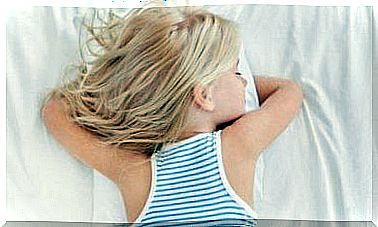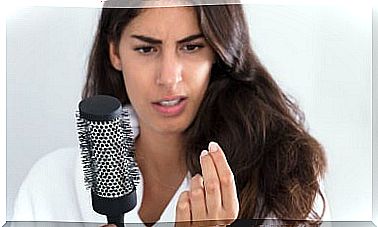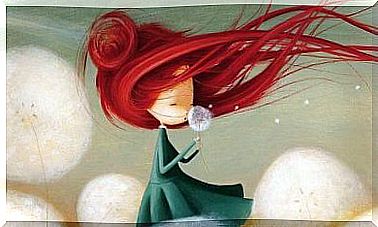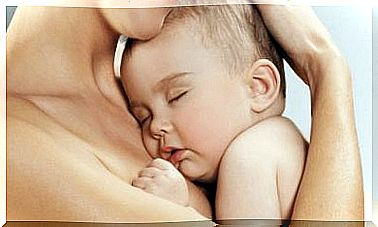Nasal Hygiene In Babies: 6 Important Points

Because they are delicate, simple tasks like nasal hygiene in babies can be a problem if not done correctly. The main thing is to be careful and not use force.
It is not surprising to anyone that a stuffy nose is a nuisance. Not being able to breathe is frustrating and annoying, especially when it’s time to sleep.
In babies, the problem becomes more complicated because they cannot blow their nose yet. So it is important that their parents help them. This way, they will be able to clear their airways of the mucus that builds up there and clogs their nose.
When should nasal hygiene be done in babies?
The nasal hygiene in babies is recommended when they clogged due to mucus of the respiratory tract can not breathe well.
With nasal hygiene in babies, we not only help children breathe better, but also prevent mucus from building up and causing problems such as sinusitis or otitis. These are perfectly normal diseases in babies.
It is recommended that babies do nasal hygiene at bedtime and before eating. This means that they can eat or sleep without any discomfort in the airways.
Alternative method of blowing babies’ noses
One recommended method is to use a humidifier or find a way to humidify the room where the baby will be for a long time.
This method is ideal, especially in winter, as the air from the heater can dry out the airways and make the problem worse.
There are devices that can be hung on the heater and allow the water to evaporate. We can also moisten an area by placing a pot of water on a radiator.
Before we blow the baby’s nose
- Wash your hands thoroughly. This prevents infections.
- Try to make sure the baby is comfortable (this way you will avoid anxiety or crying).
- Have all equipment at hand so that the process can be carried out quickly. The most common tend to be: saline solution, a syringe, and a nasal aspirator.
- Have a tissue handkerchief or a wet disposable towel on hand in case you need it.
- Be careful with the baby’s nose.
- Don’t force the baby if he is resisting.
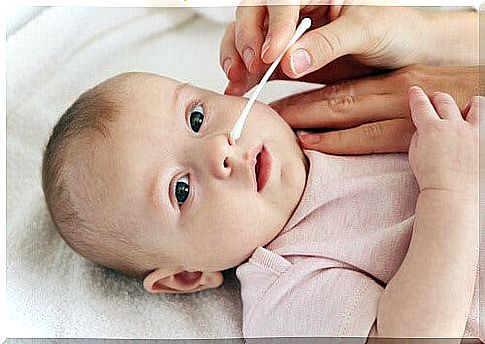
How to Perform Nasal Hygiene in Babies
We need your full attention here, as it is important to raise a good result and that the baby feels comfortable and will not be harmed.
If the child is able to follow directions, the best thing to do is to give them instructions to tilt their head forward over a sink .
On the other hand, if it is a baby, we need to place it on a soft surface such as a changing table or on a bed. Then we have to make sure that the baby is calm. This is a bit difficult, but we should find a way to calm it down and keep it as calm as possible. This is how we avoid getting hurt or making it uncomfortable.
To make sure the baby does not move , it is best to have someone to help us. However, when you are alone, you can wrap your baby in a blanket or towel to keep them calm.
This is how you use the saline solution
When it comes to nasal hygiene in babies, it is important to use physiological saline, the dosage of which depends on the density of the mucus. So if the baby has a lot of mucus or his nose is extremely congested, we should put a few drops in the nostrils.
If the baby does not have a lot of mucus or his nose is not very congested, a few drops of saline will be enough.
To make nasal hygiene more effective and profitable for babies, we can warm the saline solution a little before we put it into the baby’s nose . This way the fluid will bother the baby less.

Nasal hygiene in babies, step by step
- Use a syringe or dropper to drop a drop (or more than one, depending on which) into the opening of each nostril. If you do it this way and don’t insert the tip of the device into the baby’s nose, you will cause less discomfort.
- When the liquid enters the nostril, prevent your baby from opening their mouth (gently press their chin) so they can breathe through their nose and expel the mucus.
- Do not use the irrigator or nasal aspirator directly, as the body expels the mucus on its own by instinct.
- Only use the nipple if you notice that the mucus is extremely dense and the baby cannot expel it on its own.
- Try to use the nipple carefully and gently because if you are too harsh you can injure your ear or get the mucus into your ears and cause an infection.
- The most recommended vacuums have a nozzle, as this allows the suction strength to be better controlled.
- The pear-shaped teats are no longer in use because they are not effective.

